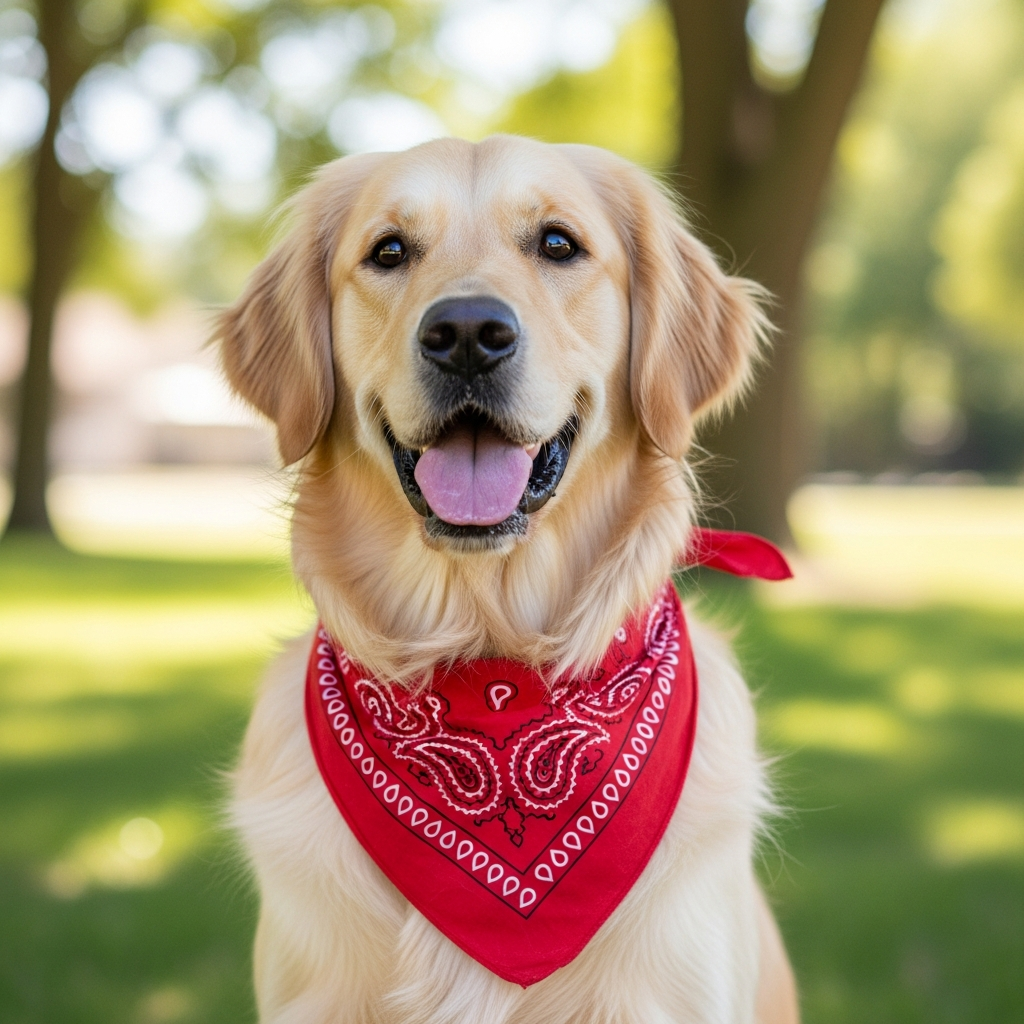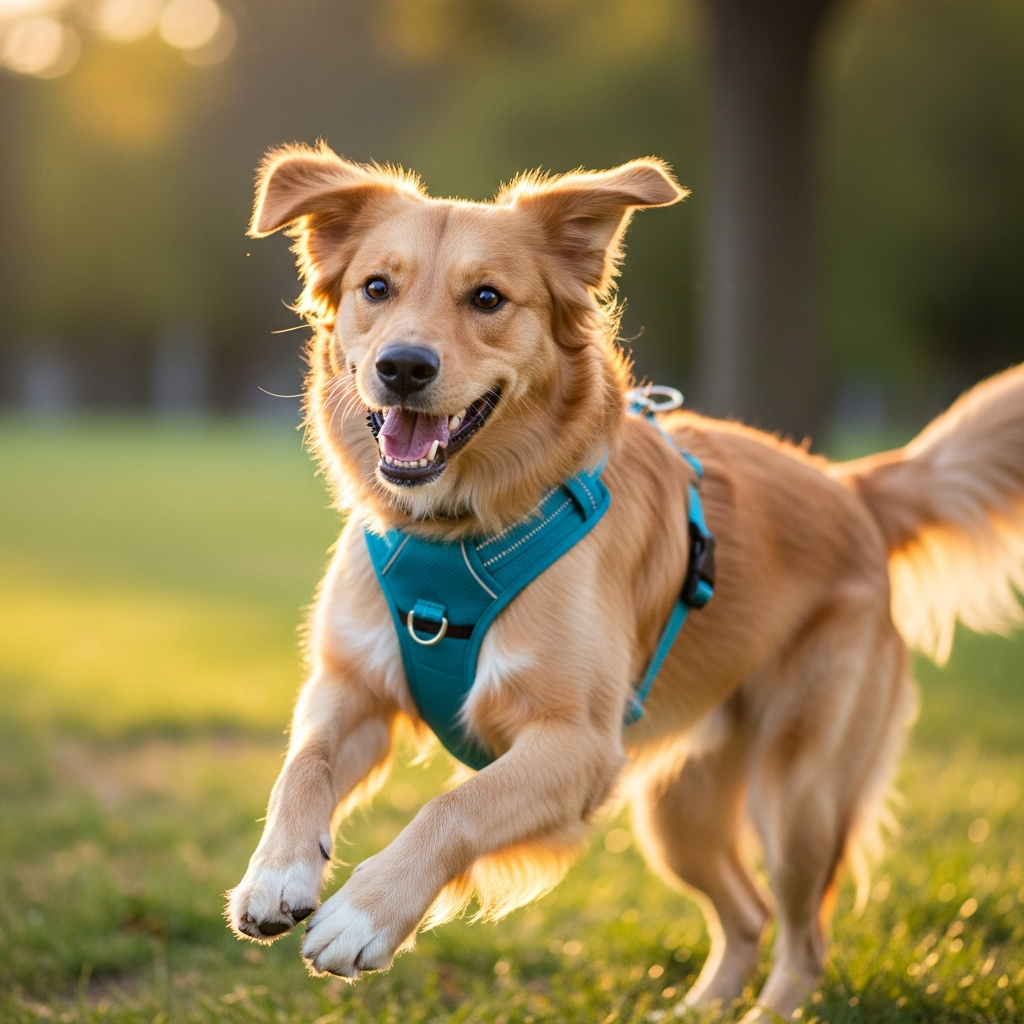Your therapy dog needs to be a picture of calm, but a collar can cause choking. This can startle patients. A harness ensures gentle control, maintaining a professional and reassuring presence.
A harness is definitely better for a therapy dog. It offers gentle, secure control without any risk of choking, which is crucial in sensitive environments. It also looks more professional and clearly identifies the dog as a working animal, ensuring safety and comfort.
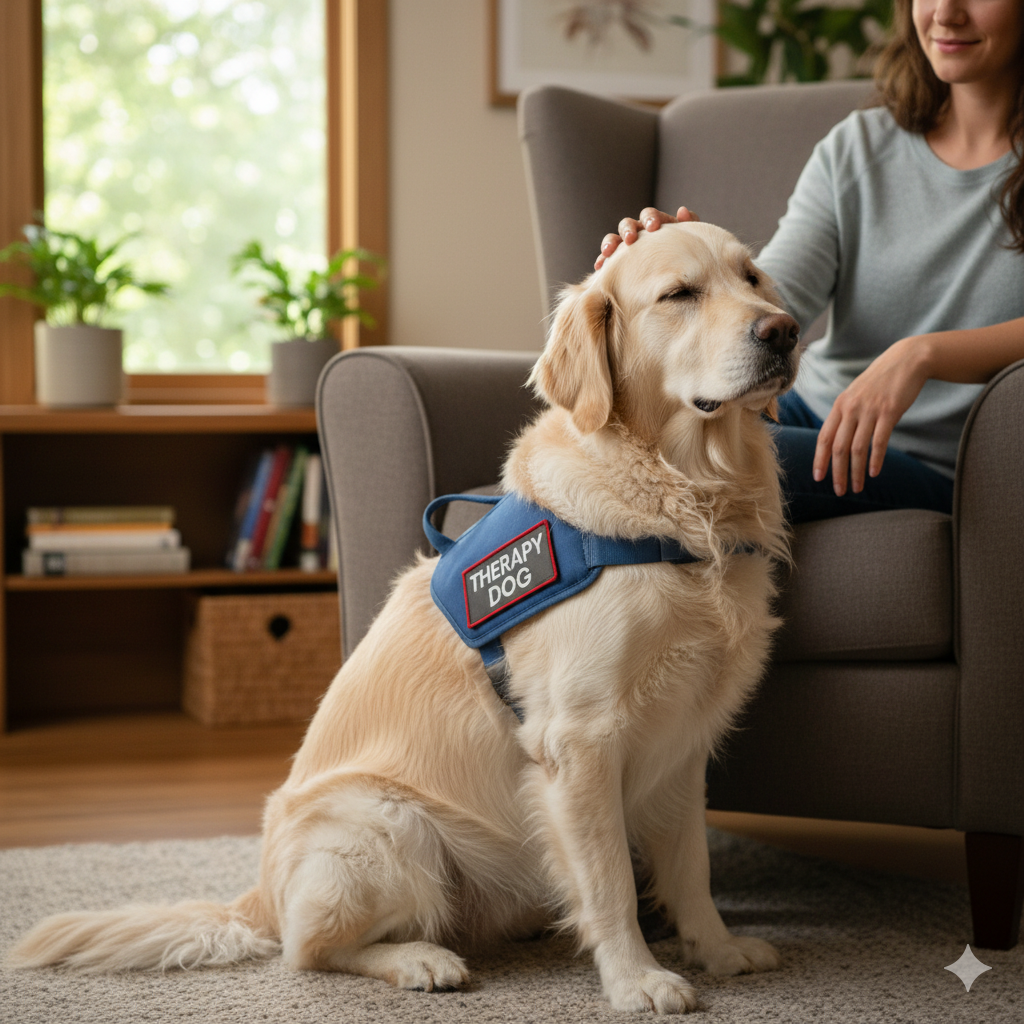
From my perspective as a dog gear designer, this isn't just a matter of preference; it's a critical equipment choice for a specialized job. A therapy dog's work environment is unpredictable and sensitive. Their gear must prioritize safety, clear communication, and comfort above all else. A collar introduces risks that are simply unacceptable in a hospital or school. A harness, on the other hand, is a piece of professional equipment designed to support the dog and handler in performing their important role safely and effectively.
Why is a Harness Safer and More Reliable in Therapy Settings?
A sudden lunge in a quiet hospital room is a handler's worst nightmare. A simple collar could slip off, or a sudden pull could make your dog gasp. You need equipment that is 100% reliable.
A harness is safer because it's virtually escape-proof when fitted correctly. It gives the handler total control over the dog's core, preventing sudden movements without applying any dangerous pressure to the dog's sensitive neck.
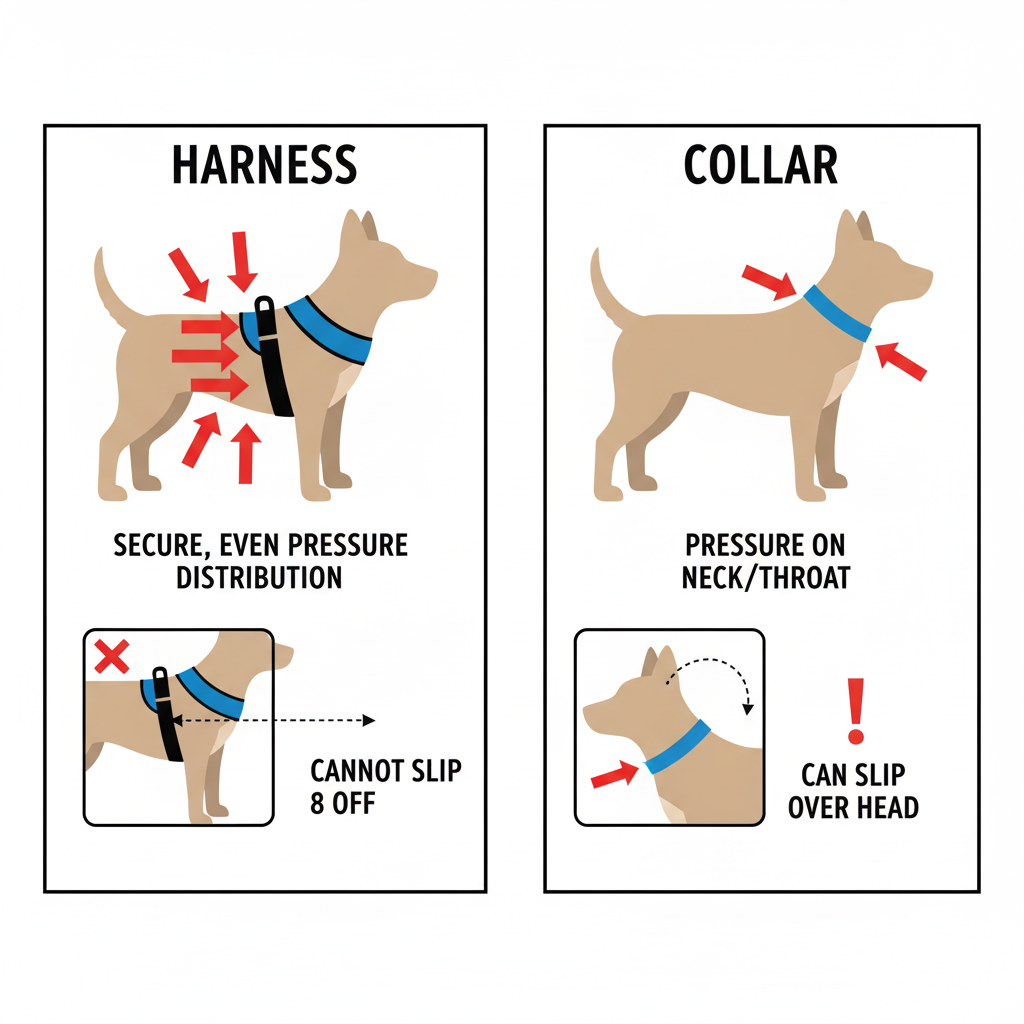
When I'm designing a product, my mind immediately goes to potential failure points. For a therapy dog, a gear failure could have serious consequences. A harness minimizes these risks in two key ways.
Preventing Equipment Failure
First, there's the issue of security. A dog, even a well-trained one, can get startled and try to back away. It’s surprisingly easy for a dog to slip out of a collar by pulling backward. A well-fitted harness that wraps around the torso is almost impossible to escape from. Second, a harness protects the dog from the handler's own reflexes. If a child suddenly grabs the dog's ear, a handler might instinctively jerk the leash. On a collar, this applies a sharp, painful force to the neck. On a harness, that same force is distributed harmlessly across the dog's chest and shoulders, preventing injury and a panicked reaction from the dog.
Better Handler Control and Communication
A harness provides a better point of leverage. Guiding a dog by their center of mass gives you more subtle, effective control than pulling on their head. You can apply gentle pressure to guide them away from a piece of medical equipment or to reposition them for a patient, all without a single stressful tug on their neck. It's a quieter, more respectful way to communicate.
| Feature | Collar | Harness |
|---|---|---|
| Security | High risk of slipping | Very low risk of escape |
| Dog Safety | High risk of neck/trachea injury | Very low risk of injury |
| Handler Control | Poor leverage, reactive | Excellent leverage, proactive |
| Environment | Choking sound can be disruptive | Silent, gentle operation |
How Does a Harness Communicate a Therapy Dog's Role?
People often want to pet your dog, but they need to know it is working. A simple collar doesn't send a clear message. This ambiguity can disrupt a crucial therapy session.
A vest-style harness acts as a professional uniform. It provides space for clear patches like "THERAPY DOG" or "PLEASE ASK TO PET," instantly communicating the dog's job and setting clear boundaries for the public.
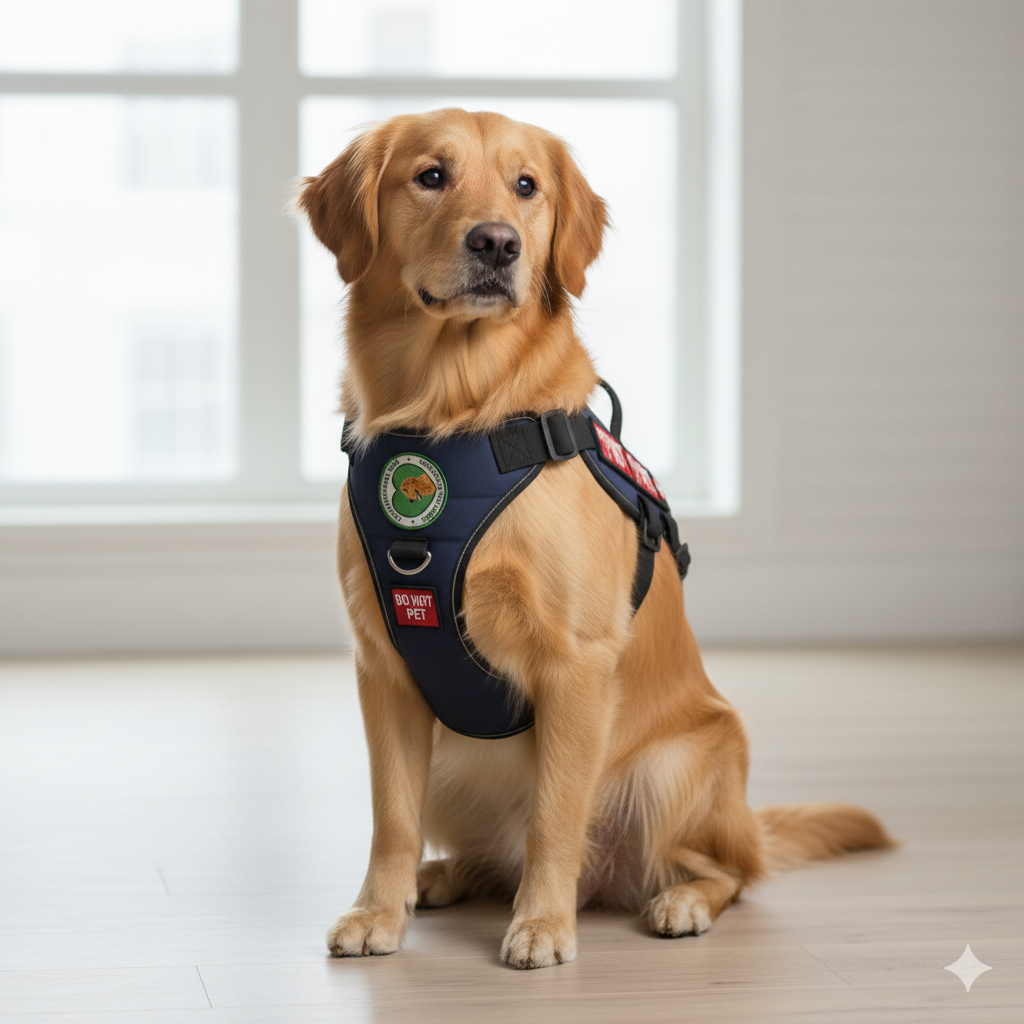
The design of a therapy dog's gear is as much about communicating with people as it is about controlling the dog. The harness serves as a critical piece of visual information that can prevent unwanted interactions and help a therapy session run smoothly.
The Uniform Effect
Think of a police officer's uniform or a doctor's white coat. These outfits instantly signal a person's role and the rules of engagement. A vest harness does the same for a working dog. When people see a dog in a plain collar, they think "pet." When they see a dog in a professional-looking vest with clear labeling, they think "working dog." This simple visual cue does most of the handler's work for them. It reduces the need for constant verbal correction and allows the dog and handler to focus on the patient. I always design these vests with large, flat surfaces on the back and sides specifically to maximize space for these important patches.
Promoting Calm and Professionalism
Beyond the patches, the harness itself sets a professional tone. It looks intentional and purposeful. It shows that this dog is a trained professional on the job, not just a family pet visiting the hospital. This perception is incredibly important for earning the trust of facility staff and for helping patients, who may be nervous around dogs, feel more at ease. A harness presents the dog as a calm, controlled partner in the therapeutic process.
What's the Best Type of Harness for a Therapy Dog?
You need a harness that is comfortable for your dog to wear for hours, but also functional and professional. It can't be too bulky, restrictive, or cause them to overheat in an indoor setting.
The best type of harness for a therapy dog is a lightweight, padded vest-style harness. It should have minimal hardware, multiple adjustment points for a perfect fit, and a sturdy D-ring on the back for leash attachment.
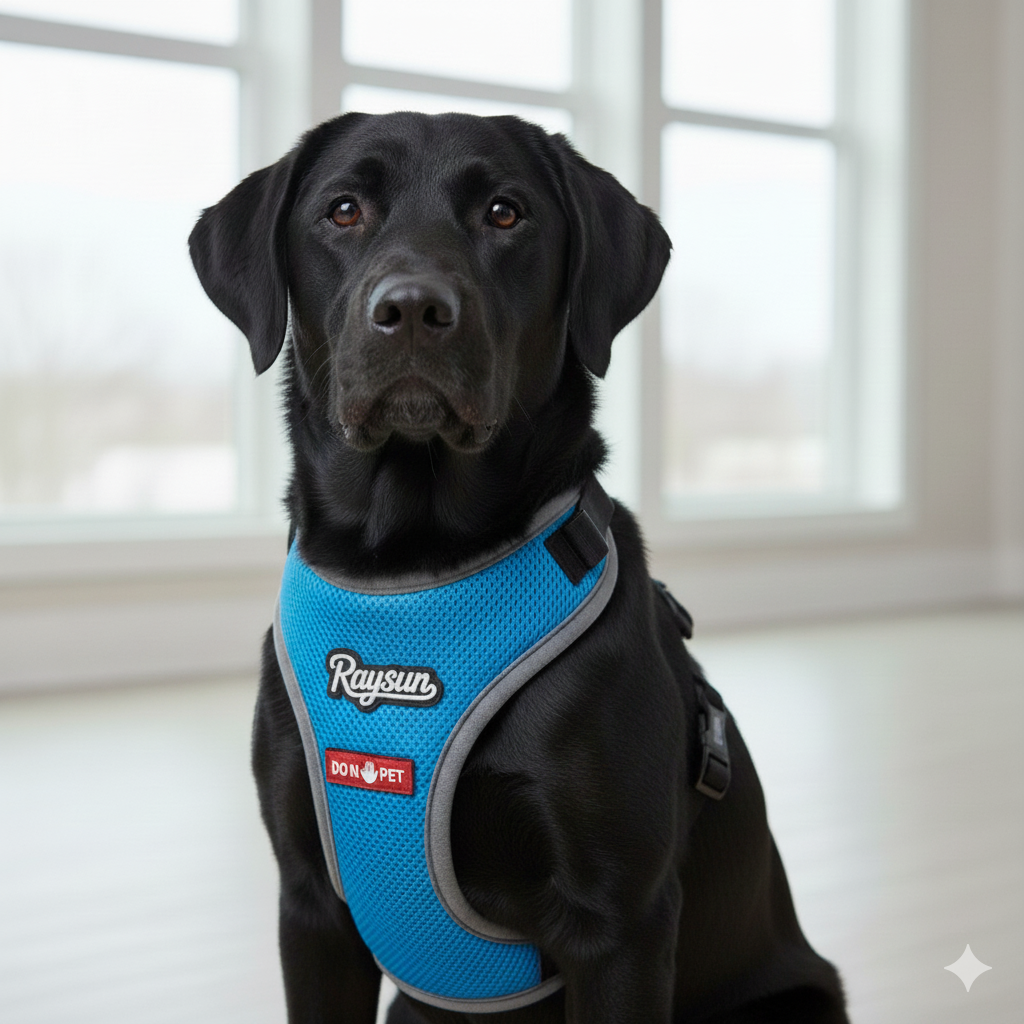
When my team develops gear for working dogs, the design process is incredibly detailed. For a therapy dog, comfort and ergonomics are paramount, because an uncomfortable dog cannot do its job effectively.
Key Design Features
- Material: The ideal material is a breathable mesh or a lightweight, soft-shell fabric. This prevents the dog from overheating during long visits in warm, indoor environments. Heavy, non-breathable materials can cause discomfort and fatigue.
- Padding: I specify thin, high-density foam padding in key areas, such as across the chest plate and under the belly straps. The goal is to distribute pressure without adding bulk or trapping too much heat. The padding must be covered in a soft, non-abrasive fabric.
- Fit and Adjustability: A therapy dog harness must have at least four points of adjustment. This ensures a snug, secure fit that won't shift, chafe, or restrict the dog’s natural movement. The dog needs to be able to sit, lie down, and place its head on a patient's lap without any part of the harness digging in or pulling.
- Hardware: All buckles and D-rings should be strong but lightweight. I often opt for high-grade, load-rated plastic buckles to reduce weight and clicking noises. The D-ring for the leash should be on the back to keep the leash away from the patient and prevent any chance of it getting tangled in medical equipment.
Conclusion
A harness is the professional choice for a therapy dog. It ensures safety, clear communication, and comfort, allowing the dog to focus on its incredibly important job of providing comfort to others.
Cindy Long is the Sales Manager of Raysunpets and a pet lover with over 12 years of experience in exporting pet products. She specializes in providing customized dog chest carriers, leashes and pet accessory solutions for the European and American markets, always focusing on the real needs of customers and pets, and is committed to creating high-quality, practical and comfortable products that allow fur kids to live happier lives.

